Diving into the Heavens: The Solar System Scope Project
Jozef Bodlak (Solar System Scope) tells the story behind an app that takes users on an immersive journey with the aim of bringing the grandeur of space to the fingertips of people around the world.
Read article in the fully formatted PDF of the Europlanet Magazine.
The story of the ‘Solar System Scope’ began over a decade ago with the determination of two young siblings, Adrian and Marian Bayer, who were captivated by the wonders of the Universe. They set out to craft a simple app that emulated our Solar System utilising data from NASA. A driving force behind the project was their desire to share their passion and personal fascination with space with others, particularly with the younger generation. Combining their skills and knowledge in programming, graphic design, and physics, they developed their first astronomy app, the ‘Solar System Scope’, in 2011.
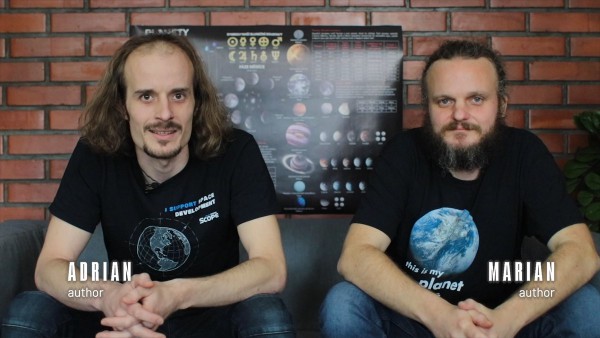
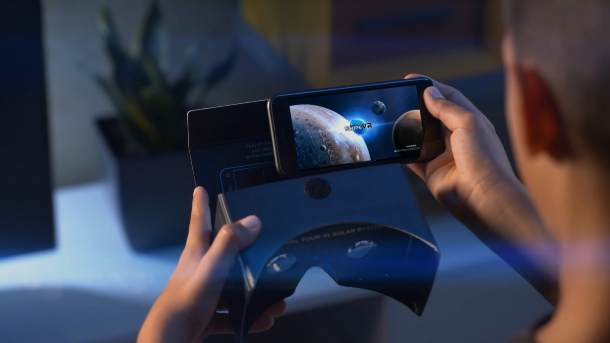
Adrian and Marian perceived the potential of technology to act as a bridge between the scientific communities and a public that can sometimes feel daunted by the intricacies of astronomy. Thus, their vision was to create a platform that was not only accurate and information-rich but also intuitive and accessible to all, irrespective of age or prior knowledge.
As the project grew, the two siblings rallied around them a team of equally passionate individuals who shared their vision and aided in its realisation. The success and the overwhelmingly positive response to the ‘Solar System Scope’ have led them to constantly improve the app, add new features, and expand their range of astronomy apps.
They have now set up a company, AuLea Ltd, which specialises in astronomy education, merging education and entertainment to spark a passion for the cosmos. The ‘Solar System Scope’ has more than 20 million users worldwide, with 310,000 downloads per month from 152 countries.
Unpacking the ‘Solar System Scope’
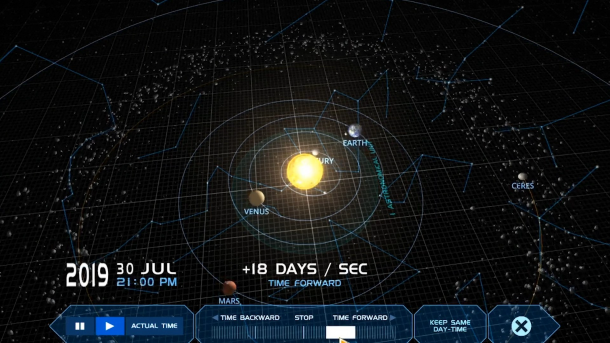
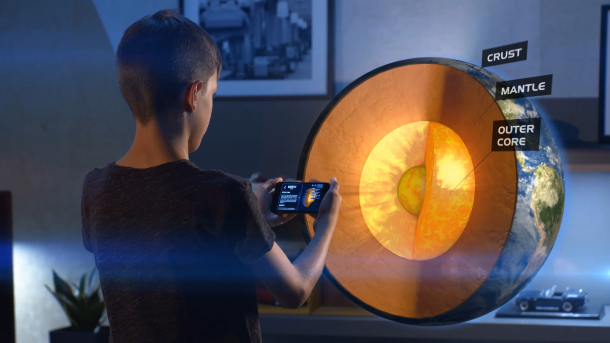
The ‘Solar System Scope’ aims to meld high-definition graphics, user-centric design, and scientifically precise data to simulate the Universe. Here’s a closer look at its features:
- Interactive 3D Exploration: Users can seamlessly navigate around planets, moons, asteroids, and other celestial objects, observing them from diverse angles and proximities. This interactivity provides a tactile, immersive experience.
- Precise Data Integration: Drawing mainly from NASA and other authoritative space research entities, the ‘Solar System Scope’ ensures that every celestial depiction, from planetary orbits to relative sizes, is rigorously accurate.
- Time Manipulation Capabilities: Users can retrospectively view celestial events, monitor current space phenomena, or even forecast future cosmic occurrences, offering a comprehensive perspective of the Universe’s timeline.
- Virtual Reality (VR) Immersion: With state-of-the-art graphics and real-time simulations, users are transported into the heart of the cosmos, offering a first-hand journey through space.
- Multi-language Support: The tool operates in 19 languages, ensuring its appeal and accessibility to audiences around the world.
- User-friendly Interface: The tool’s simple interface is designed with both new and seasoned astronomers in mind.
- Galactic Encyclopaedia Integration: An integrated space encyclopaedia brings users a Universe of facts, insights and astonishing discoveries about the cosmos.
- Rendering Technology: The rendering is capable of producing photorealistic images of celestial entities, complete with intricate textures, luminosity, and atmospheric nuances.
Impact of the ‘Solar System Scope’
The ‘Solar System Scope’ is ideal for anyone who loves looking up at the stars but isn’t an expert. They can explore the Universe from home, seeing where stars and planets are right now and what’s happening around us in space.
The blend of accurate data representation with user-friendly interfaces has also made it a valuable tool for both professional and amateur astronomers. Universities and research institutions have embraced it as an addition to their resources, further establishing its credibility. However, what pleased the team most was feedback on how the app grabs the attention of children and teenagers. In schools, keeping students interested is tough. Young people are glued to screens in search of fun and information. The ‘Solar System Scope’ combines both. It provides a hands-on, lively view of our Universe, making complicated ideas about astronomy easy and fun. Teachers can show live space events, making astronomy lessons a lot more exciting. Testimonials from schools, museums and other educational institutions show that the ‘Solar System Scope’ is effective in getting students excited about space, making them want to learn more and maybe even think about a job in space one day.
John Vilagos, a middle school teacher, told the team: “The ‘Solar System Scope’ is a useful tool to deploy with a classroom toward children with Special Educational Needs and Disabilities on a variety of levels. The visuals and audio allow for the creation of a highly sensory experience which fosters an exceptionally immersive atmosphere, especially when deployed in a sensory room! In addition to this, the depth of information contained within the software makes it an amazing tool for research projects and really allows students to tap into their special interest.”
Benjamin Gondrez, an exhibit technology supervisor in Colorado, US, said, “During the COVID-19 pandemic, the Fort Collins Museum of Discovery searched for ways to continue to engage our audiences by bringing them virtual discovery through online platforms. When I came across ‘Solar System Scope’, I knew it would be an amazing tool to do this by taking viewers on a virtual tour of the entire Solar System. I captured the screen output to live stream while narrating the tour. Viewers mentioned how stunning the visuals were and how much fun it was to fly through the Solar System in this interactive way. I hope to continue to utilise ‘Solar System Scope’ to present space science to museum audiences, as well as to simply have fun flying through and discovering more about our home in space!”
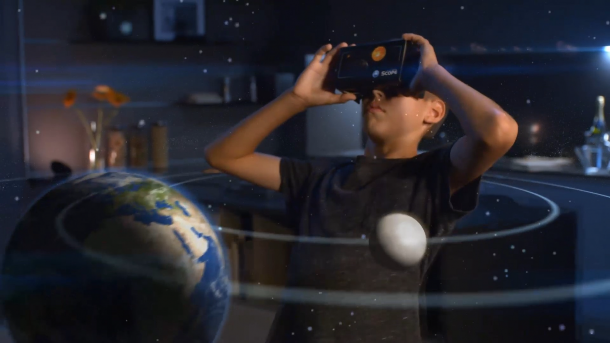
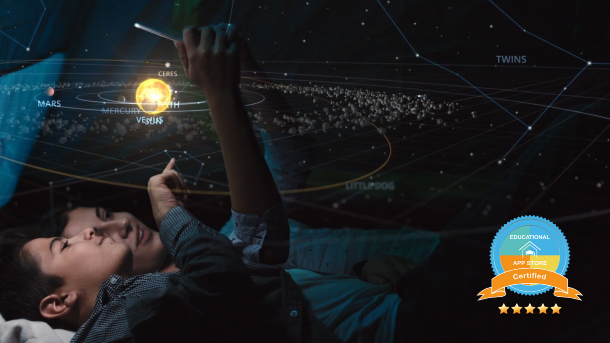
Future Prospects for the ‘Solar System Scope’
The ‘Solar System Scope’ team aims to continually refine and improve existing models, striving for even higher levels of accuracy in representing the intricacies of the cosmos. Users can expect to benefit from more precise portrayals of celestial bodies and their movements.
New languages will be added, and the team aims to strengthen the brand and integrate social responsibility and sustainability.
Recognising the need for hands-on learning experiences, the team intends to roll out additional interactive modules that are tailored for educators. These additions will increase the dynamism and engagement of the tool in classrooms. In particular, the VR facet of the ‘Solar System Scope’ is earmarked for substantial upgrades. With these advancements, users can anticipate an even more immersive journey through planets, moons, and stars.
Conclusion
The ‘Solar System Scope’ project is an example of what is possible when technology meets passion. It brings the vastness of space to the fingertips of everyone, from school children to dedicated amateur astronomers. Tools like the ‘Solar System Scope’ are invaluable in reminding us of our place in the Universe and inspiring dreams of what’s beyond our blue planet.
With distributors and educators around the world, the ‘Solar System Scope’ offers huge potential for collaboration. The team is reaching out to educational institutions, planetariums, and astronomy enthusiasts, hoping to find partners who will join them on this journey, enhancing the experience for many more. Let’s explore the stars together, and in doing so, reshape the future of astronomical education.
Find Out More
https://www.solarsystemscope.com
The Solar System Scope team presented the project in a session on ‘How to Transform Your Outreach Activity into a Business’ at the Europlanet Research Infrastructure Meeting (ERIM) 2023 in Bratislava. Watch the recording:


